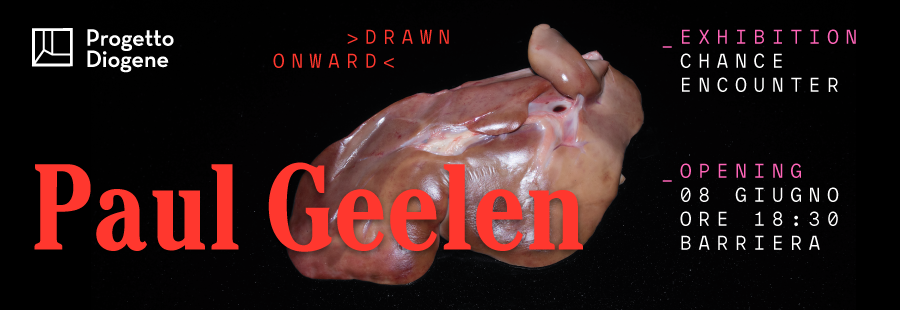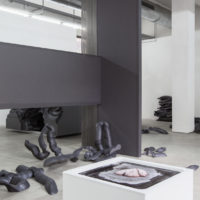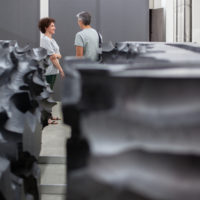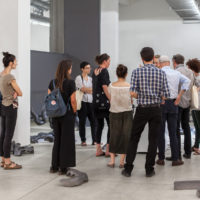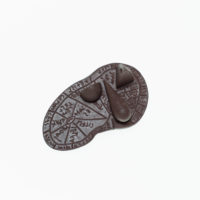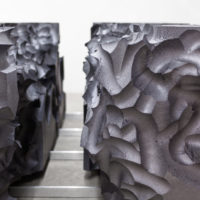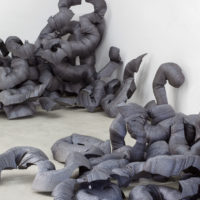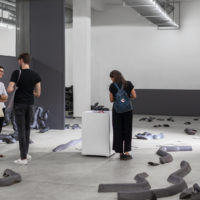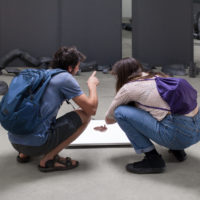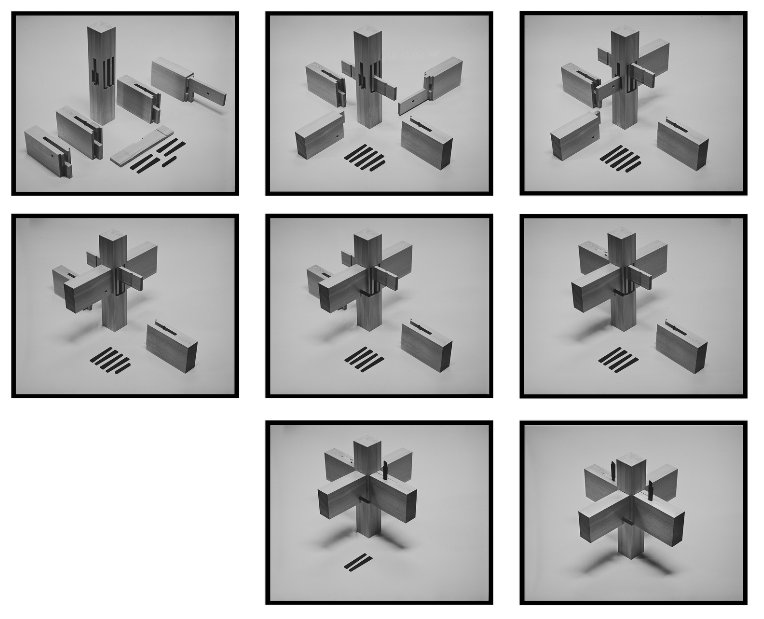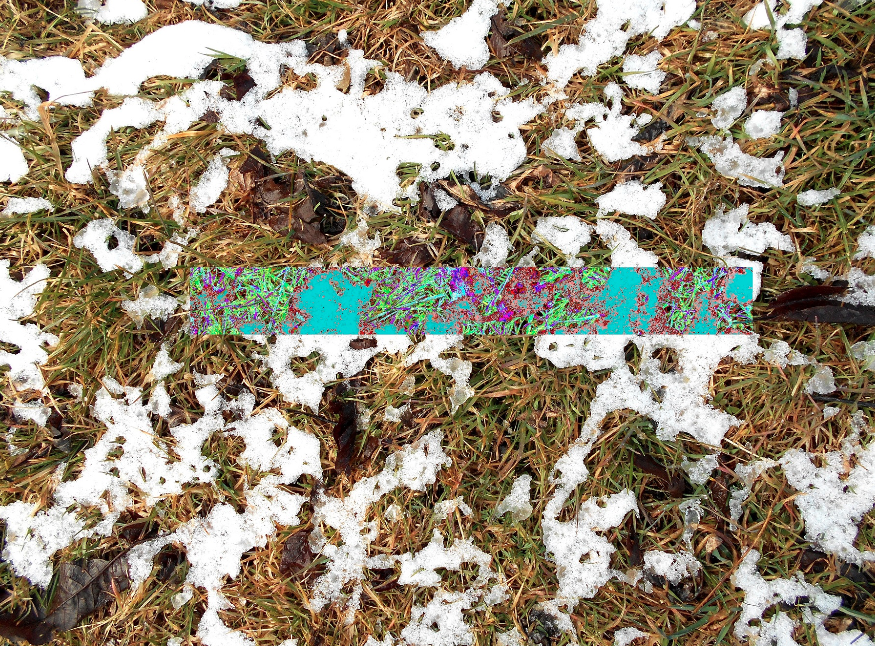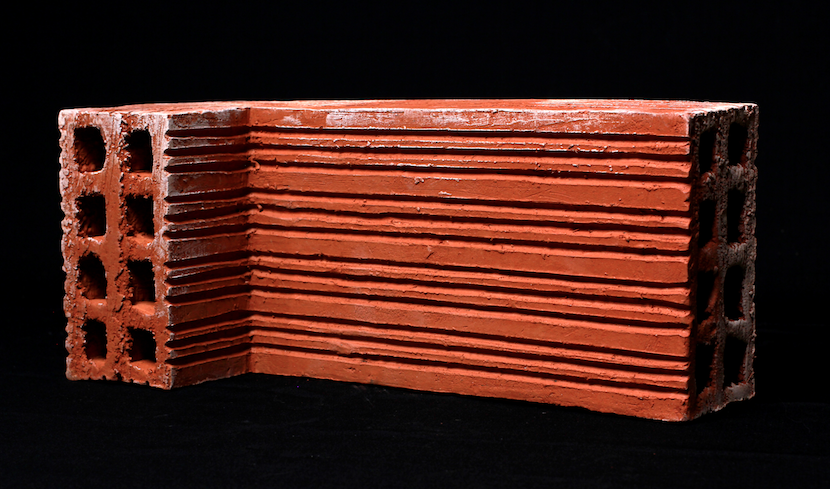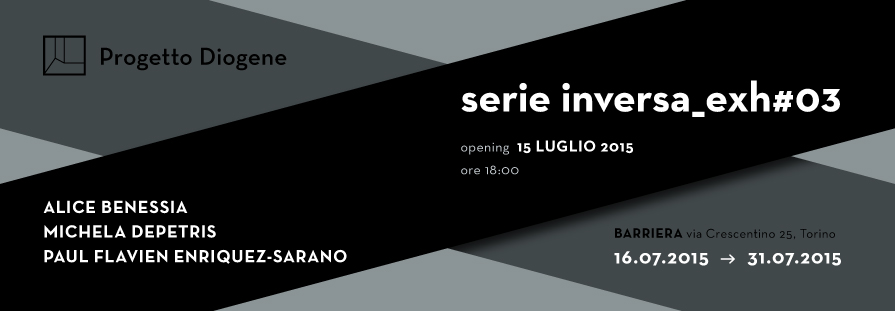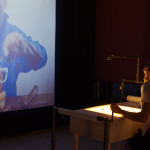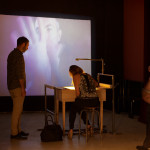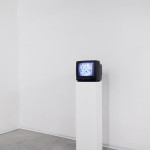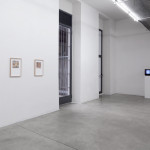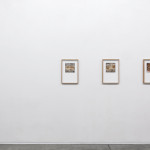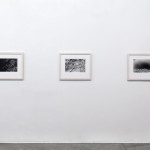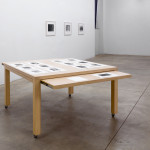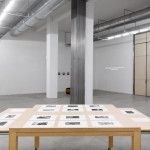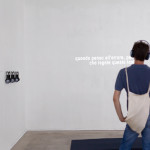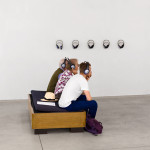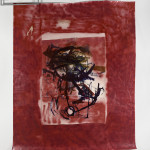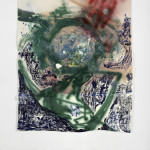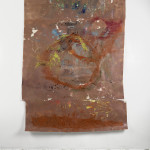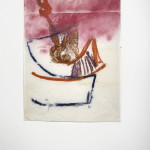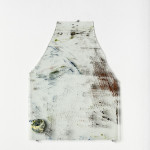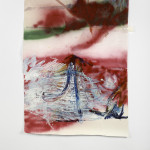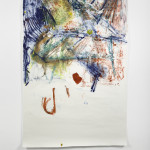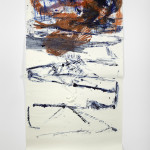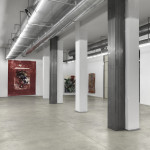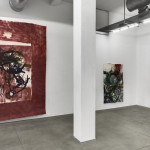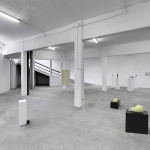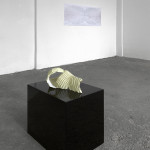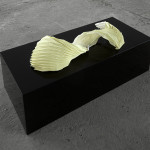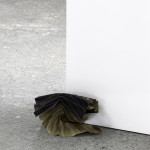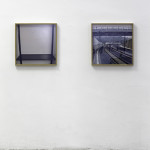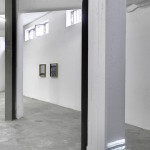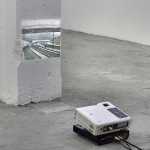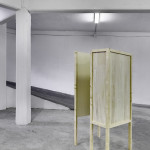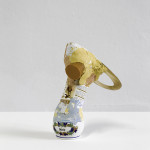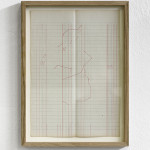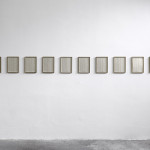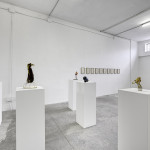PAUL GEELEN
Chance Encounter
Barriera, via Crescentino 25 Turin
9 June – 1 July
Turin – On Thursday June 8 from 18.30 hrs at Barriera – via Crescentino 25 – the solo exhibition Chance Encounter by artist Paul Geelen will open to the public. The exhibition is the result of a collaborative project between Progetto Diogene and P/////AKT (Amsterdam) in the context of the exchange program DRAWN ONWARD.
Paul Geleen’s project, Chance Encounter, stems from an archaeological find a farmer discovered in 1877, when he was ploughing the fields in the countryside around Piacenza. The object, dubbed ‘Piacenza’s liver*’, is a bronze sculpture with Etruscan inscriptions depicting a sheep’s liver and was used for reading the stars.
In the display in Barriera exhibition space, the artist created his own life-size version of the Etruscan liver and opposite is an actual sheep’s liver lodged on a cooling surface specially made to preserve it. The two objects speak of two, only apparently known, realities.
If, on the one hand, we know what the origin and use of Piacenza’s liver are, on the other, we may wonder how far our knowledge goes. Can we really interpret this object the same way as those who made it? And also the real liver. An organ we possess, which yet remains concealed.
To these two objects Geleen adds another ‘known’ one: for the first time, he carved two black polystyrene blocks, two parallelepipeds. In his practice, the artist indeed employs a new material he has not used before in every exhibition. And so the polystyrene solids, cut with an incandescent blade, reveal residues that are charged with meaning. Almost as if they towered over the solid mass of the two parallelepipeds, whose shape recalls the two brain hemispheres. The ‘noble’ organ, Plato reminds us, that communicated with the rest of the body through the liver’s reflecting and shiny surface; a liver, as we have seen, that is used to see into the future. The artist further evokes this concept through the sound effect of a passing train: sound is movement, the prime condition for the future.
*(a life-sized bronze model of a sheep’s liver covered in Etruscan inscriptions, II-I sec. B.C.)
Paul Geelen (1983)
lives and works in Amsterdam.
From 2004 to 2008 he studied at the AKV | St. Joost in Breda. In 2014 he completed his two-year residency at de Ateliers in Amsterdam. Recent exhibitions include: A Minor State of Flux – Arti et Amicitiae, Amsterdam (2017), Sliding under traces – A Tale of Tub, Rotterdam (2016), Survival Blur – Grey Light Projects, Brussels (2015), Percussive Hunter – Akbank Sanat, Istanbul (2015), Axis Mundi (Art as a healing tool) – Moinsun, Paris (2015), The Hidden Picture – Cobra Museum, Amstelveen (2014), Offspring – de Ateliers, Amsterdam (2014) and Æon Flux at P/////AKT, Amsterdam (2014).
Photos by Cristina Leoncini
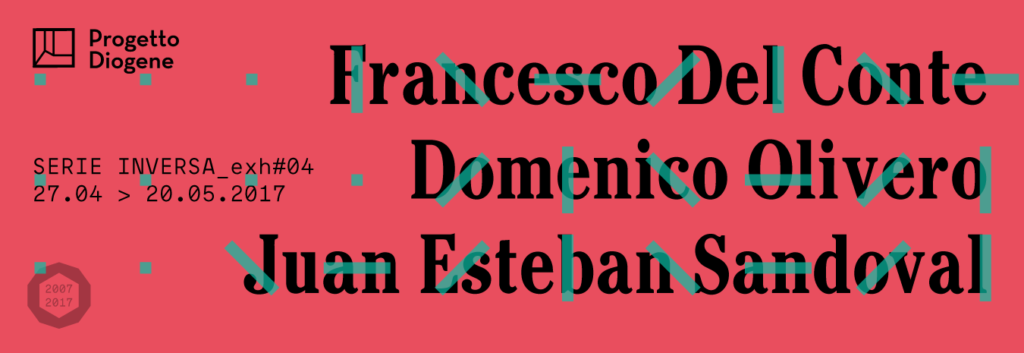
Serie Inversa_Exh#04
April 27, 2017 at 6:30 pm
Via Poliziano 32, Turin
The group exhibition _Exh # 04 concludes the annual cycle of the Reverse Series, a program sponsored by Project Diogene that carries out a survey in Piedmont to discover the artistic research paths currently outside the commercial or institutional circuits. The artists selected for the fourth edition of the project, which will be hosted in the spaces at Via Poliziano 32 starting on April 27, 2017, are Francesco Del Conte, Domenico Olivero, and Juan Sandoval.
Joining – by Francesco Del Conte – investigates the traditional joinery technique that over the centuries has shaped Japanese architecture. The work was conceived and produced by the artist in Japan during the 7 months research program at the Center for Contemporary Art CCA Kitakyushu. The project started when the artist commissioned eight different types of joints from Toshiro Kobayashi’s workshop, a carpenter based in the Ehime Prefecture who still follows the traditional procedure. The artist has studied these objects with the methodological rigor that the photographic medium grants, depicting them as the protagonists of a carpentry manual through the rhetoric of a neutral and objective timeline.
Each joint, made up of numerous parts, contributes to the building’s harmony, becoming not only an evident and functional paradigm of the concept of architecture itself, but also inviting us to reflect on the original relationship between man, space and living. The camera’s subject is not only something tangible and physical, it is also a form of knowledge; a fragment of history that breathes within the wooden shapes.
With Tusiri inundu 1827 (everything is resolved in doubt 1827) Domenico Olivero reflects on contemporaneity with humanistic spirit, investigating the fragility of memory and the new information technologies. On this occasion, the unstable form of nature becomes sculptural memory. The concept of multiplicity and creation is highlighted in the relationship between the physical form of a simple ball, made up of thousands of unstable crystals of snow, perceived by a laser scanner which converts it into a digital code. Through an automatic connection to a 3D printer, the code creates a stable physical object. An unnatural artifice, a figurative work, the memory of the reflection of light on a transparent body, or perhaps something else; perplexity is highlighted by the background images, a sky, and a QR code.
The project Nascondere (Hiding) is part of Juan Sandoval’s current research on the sculptural object, which arises in connection with a specific context, where the environmental impact caused by industries is particularly significant and in some cases disastrous. The artifact on display is the result of a process of extraction of soil and clays collected in the area between Naples and Caserta, where over the years various materials and toxic waste have been illegally hidden in legal and illegal dump sites. The project also concerns a significant action of hiding this artifact in the wall of a new building in Switzerland. Hiding indirectly regards the contradictory relationship between the levels of legality and illegality, about which it is often difficult to express an opinion or position. The outcome of Sandoval’s intervention can be read as visual announcement of something for which there are no visible instances, a kind of paradox of representation, a way to approach the object being investigated which takes on the shape of an apparition.
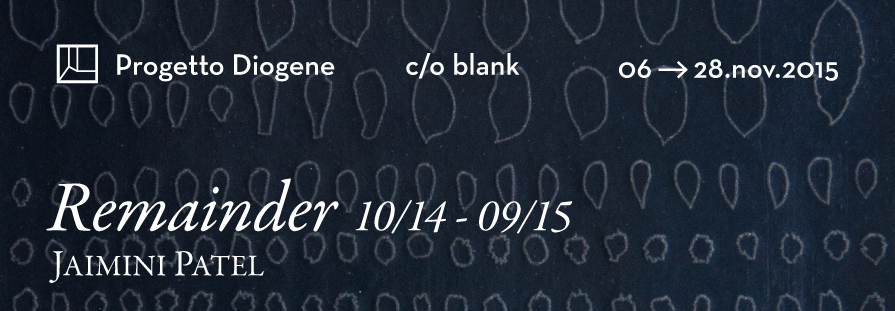
BIVACCOURBANO_R
JAIMINI PATEL
Remainder 10/14-09/15
November 6, 2015
h. 8.30 > 11:30
November 8-28, 2015, by appointment
blank, via Reggio 27, 10153 Turin
TURIN – On November 6, 2015, blank will host the inauguration of the exhibition Remainder 10/14-09/15, an installation by the British artist Jaimini Patel, winner of the residency/research grant of the eighth edition of Bivaccourbano_R, awarded by Progetto Diogene in support of artistic investigation. During the opening, there will be a presentation of the catalogue with an essay by Brian Catling and conversation between Rebecca Heald and the artist.
The exhibition is the culmination of research begun during the residency, which has developed over the last year into an on-going work. Patel has accumulated the pits and seeds from food that she has consumed and presents these as twelve arrangements alongside carbon works. Begun previously to her visit to Turin, the carbon paper sculptures became part of the work after a visit to the State Archives in Piazza Castello during which a consideration of the nature of an archive began. Both seeds and carbon paper are ordinarily discarded once used. However, once attention is paid to these objects in their own right, they become containers of mysterious layers of information, time, knowledge and memory. One is concerned with biological time and the other with a constructed experience of it. They are both mechanisms for copying, which inevitably occurs through a process of incremental errors, shifts of information, losses and gains. The work points to a legacy of a past event, but also a possibility not yet expressed, something yet to happen.
The exhibition has been made possible under the Bivaccourbano_R program in collaboration with e/static and contributions from the San Paolo Banking Company and the Piedmont Region, with the sponsorship of the City of Turin and the collaboration of GTT, Turin Transport Group. The exhibition will also be open to the public on Saturday, November 7, from 9 pm to midnight, to coincide with the Contemporary Arts Night, and by appointment until November 28.
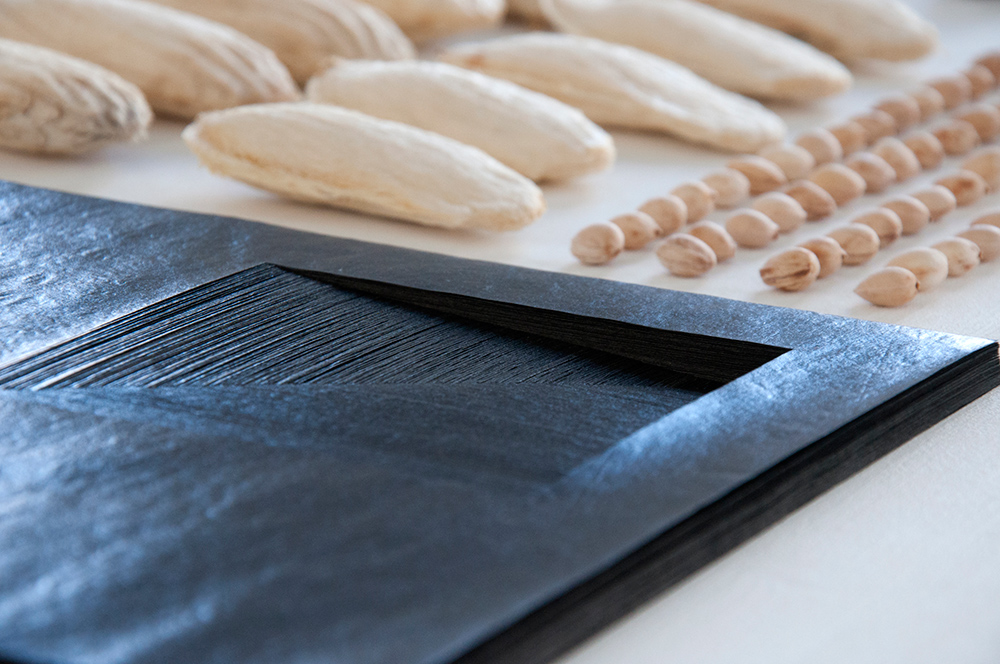
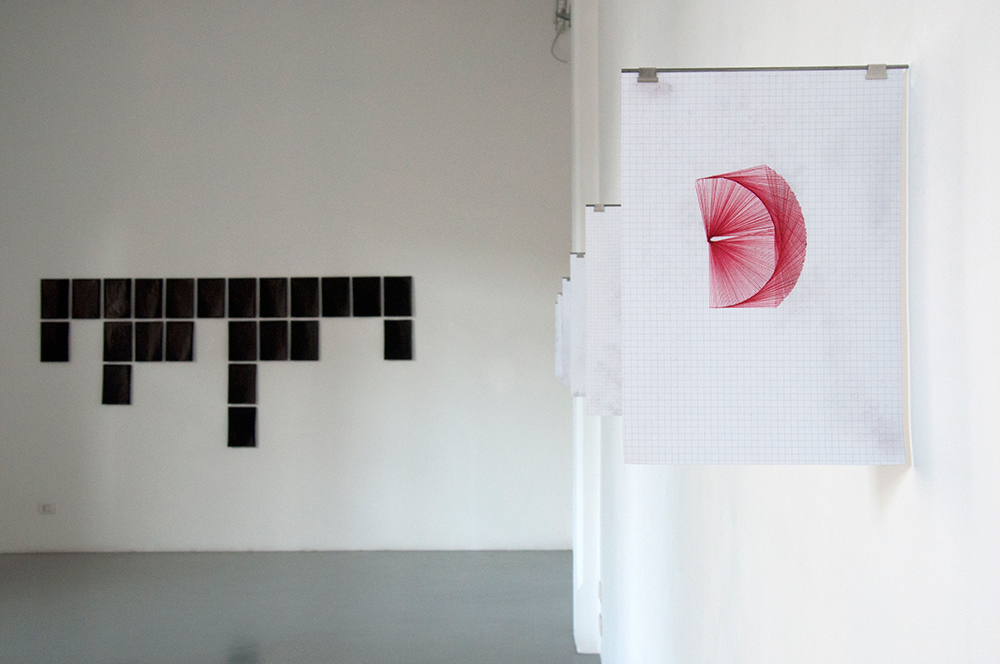
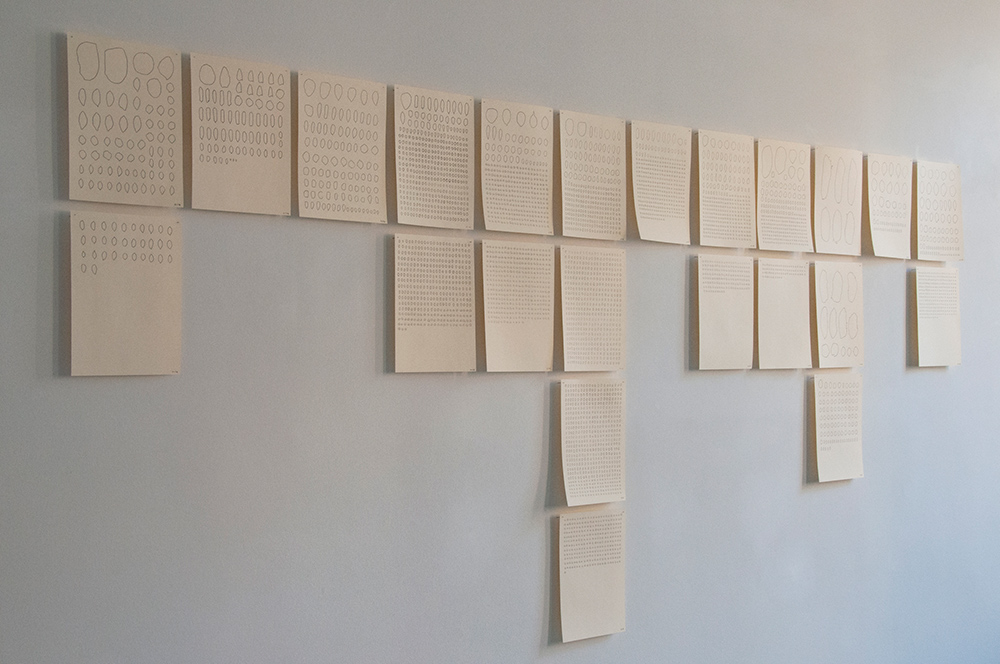
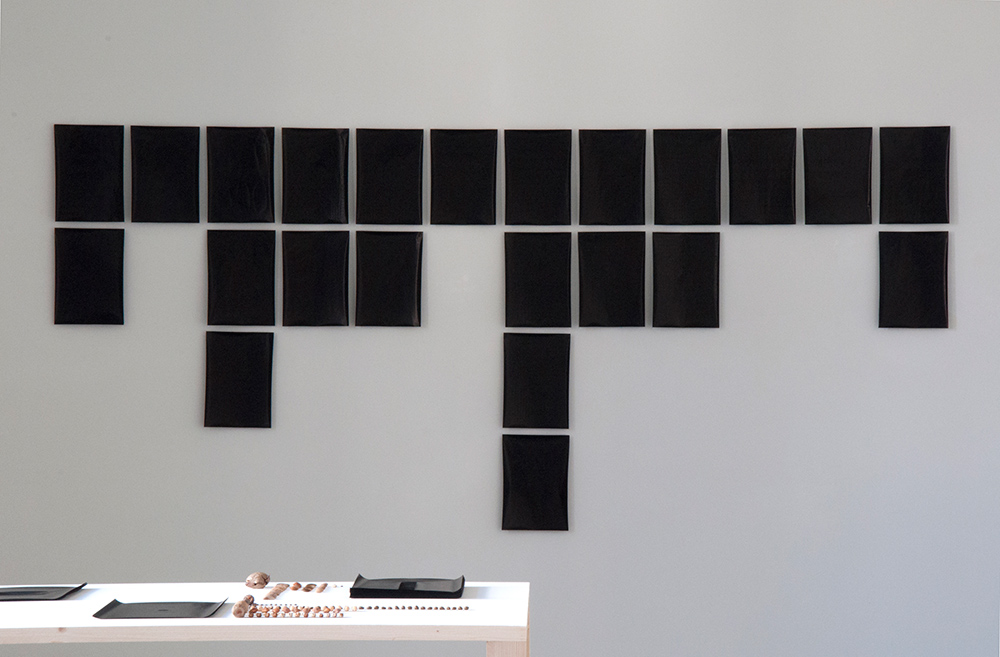
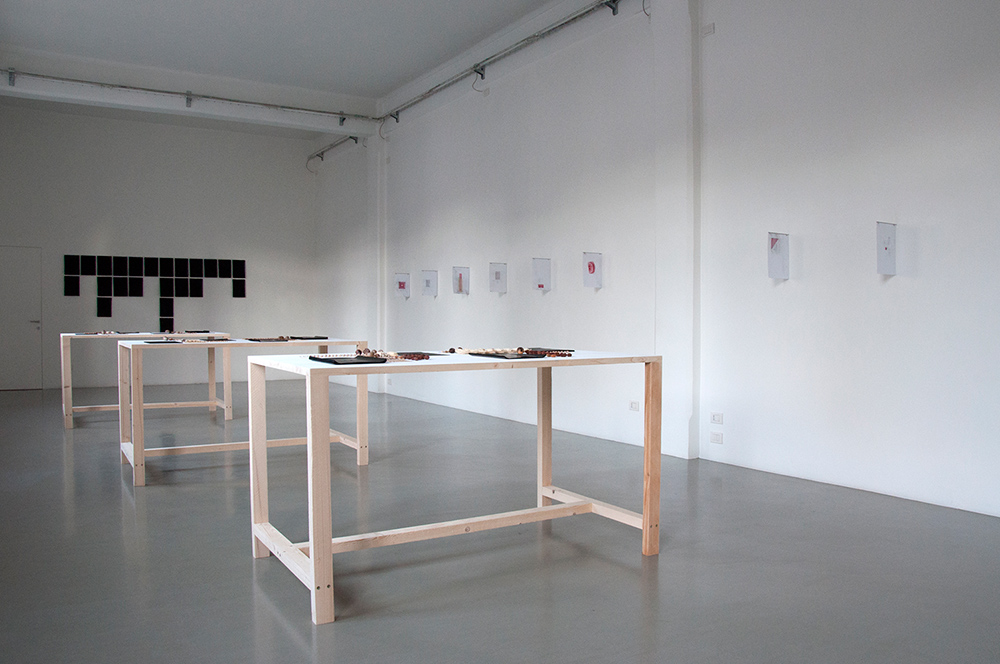
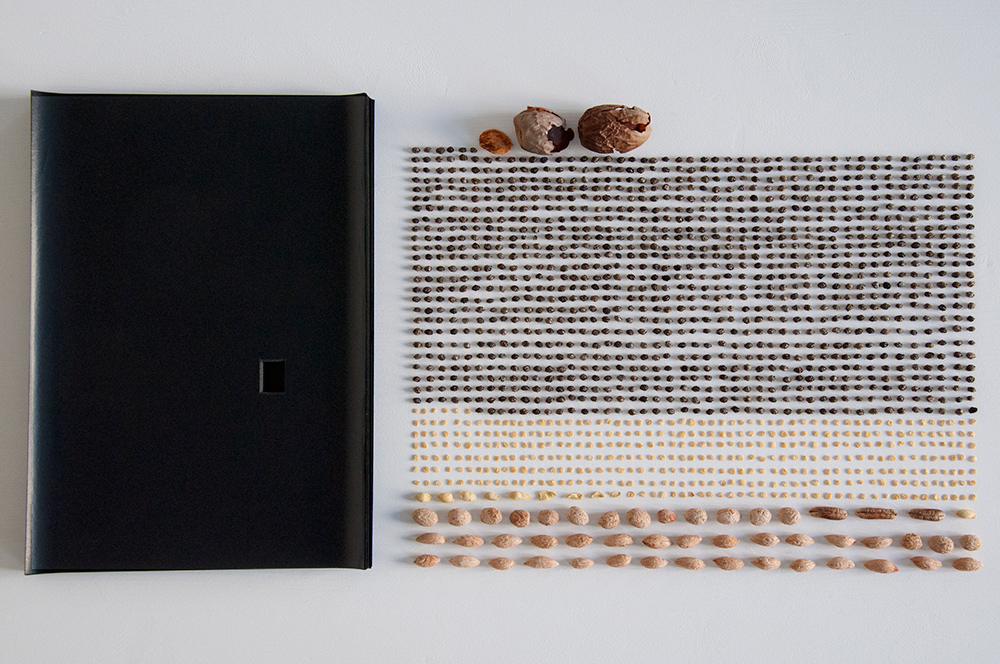
blank
via Reggio 27 – Torino
www.estatic.it
info@estatic.it
Turin – The collective exh#3 marks the closing of the annual cycle of Serie Inversa, a program of Progetto Diogene for carrying out a survey to discover the paths of artistic research currently going on in Piedmont, but outside the commercial or institutional circuits. The artists selected for the project’s third edition, which will be hosted in the spaces of the Barriera Association starting with the inauguration on July 15, are Alice Benessia, Michela Depetris and Paul-Flavien Enriquez-Sarano.
Alice Benessia uses the language of analog photography to investigate the existential theme of the relationship between human beings and the rest of the living (and non-living) things that surround them, accompany them, and sustain them in life on the planet. With her installation Animale di terra, Benessia attempts to formalize a controversial relationship between mankind and nature, where the individual and the collectivity show points of contact and complementarity. A series of black and white analogue photographs, hand printed by the artist on fiber-based paper, are exhibited without any protection on her work table, which is handcrafted and based on a design developed by the artist herself by using her own body measurements. This is an approach that leads back to primordial issues such as the personality and vulnerability of an individual. The iconic power of the photographs is accompanied by written texts and 3 large prints (always b&w analog photos printed by the artist), that further strengthen the dichotomy between pathos and logos.
Michela Depetris reflects on the relationship between intimacy, looking, and identity. The first topic is both a central theme and the working method used by the artist. In fact, all of her works start from the idea of performative action understood as a generative process of an activation of the reflection and as a possibility of shifting the ordinary. The relationship with the other is also substantial: by establishing partnerships and relationships, Depetris investigates shared processes and possible mutual influences, interpreting the places where they occur as possible spaces of dialogue. With the appropriation of reality through subjective experience, she tries to restore a possible vision that is sensitive and not manipulated, uncensored, open, and intimate but not self-referential. She has recently begun exploring the study of identity and looking, through videos, photography, audio installations, and performance art, moving in a hybrid environment that combines reportage, poetic composition, and action.
Paul Flavien Enriquez-Sarano draws upon his interest in cars and artificial systems, a personal stimulus, sometimes objective and sometimes wary, which derives from his studies in computer engineering. The artist reflects not only on the importance the car has from a social point of view, but also on the role of the intermediary that is embodied in his works in relation to the public and the artist’s inner discourse. Paul Flavien extends this reflection to automatism linked to the physical and biographical fact through which the notion of pleasure as a revolutionary experience and a cognitive or idea-motor flow intervenes in a unique way. This research has led him to imagine creation devices inspired by the mechanical systems, relational installations that call into question the issues of consciousness and philosophy of mind, and at the same time casting a look poetic on one’s identity and existence, sometimes representing them in ways that are absurd and ironic at times, rather than disquieting or catastrophic.
- Paul-Flavien Enriquez-Sarano
- Paul-Flavien Enriquez-Sarano
- Paul-Flavien Enriquez-Sarano
- Alice Benessia
- Alice Benessia
- Alice Benessia
- Michela Depetris
- Michela Depetris
BIOGRAPHIES OF THE ARTISTS
Alice Benessia was born in Turin in 1973, where she lives and works. She received a Degree in Physics from the University of Turin and PhD in Science Technology and Law; she holds a Master of Fine Arts Degree from the School of Visual Arts in New York (2002), and a Master’s in Philosophical Foundations of Physics from Columbia University in New York (2003). Alice Benessia is also a researcher on issues of the epistemology of sustainability at the Institute for Interdisciplinary Research on Sustainability (IRIS), in addition to being a founding member of the Italian Association for Sustainability Science. Her research is interdisciplinary and deals with epistemological matters that arise in the context of art, scienc,e and sustainability. In her photography focuses on her thinking with regard to the relationship between human beings and socio-ecological systems. www.alicebenessia.it
Michela Depetris was born in Cuneo in 1984. She attended the Facultad de Bellas Artes de Valencia in Spain for two years, and then continued her studies at and graduated from the Albertina Academy of Fine Arts in Turin. In 2009 she completed her Master of Performing Arts Practices and Visual Cultures Degree at the Reina Sofia Museum in Madrid, in collaboration with the Universidad de Alcalá de Henares. Since 2012, she has been living in Turin. She has worked with polaroid photography for many years, as well as performance art, and video and audio-installations. www.micheladepetris.com
Paul Flavien Enriquez-Sarano was born in Paris in 1980. Artistically speaking, he grew up in Berlin, where he has worked with public and private entities. He has exhibited his works in various art spaces such as the museum MAGA in Gallarate, the Museo del Novecento in Milan, the CCA Zamek Ujazdowski in Warsaw, the Sophiensaele in Berlin, the Ashkal-Alwan Art Center in Beirut, and he has worked with private galleries such as Exile in Berlin, Artspace Gallery in Paris, and Elclimamola in Barcelona. Since 2009, he has been collaborating with the Italian artist Ambra Pittoni on projects related to performance and installation.
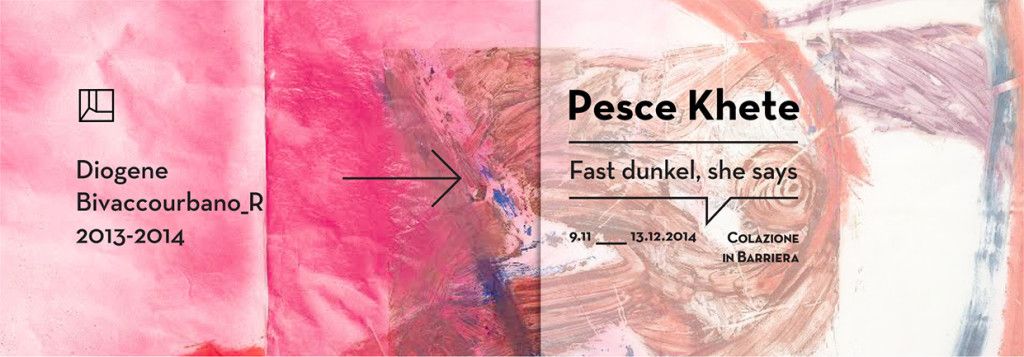
PESCE KHETE
Fast dunkel, she says
November 9, 2014
Barriera, via Crescentino 25, Torino
The Swiss-Italian artist Pesce Khete will present his exhibition FAST DUNKEL, SHE SAYS, for the seventh edition of the Bivaccourbano_R residency program in Torino, in the spaces of Barriera, a former industrial complex that has been completely renovated since 2007. Will be there the catalog of the project, which will be presented during the opening,
with a text by Manuela Pacella.
In elaborating research carried out from September 2013 to March 2014, Pesce Khete focused on a further questioning of his own approach to artistic practice, highlighting developments in the semiotic evolution and consequent linguistic changes that are uncontrollable at times: to expand the possibilities of technical solutions in order to fragment and reorganize the primary need of representation, and finding a balance and completeness between having control and absence of the same.
Pesce Khete’s works are a balancing of painting and analog photography – in a way that is instinctive and rational at the same time – that chase a feeling of vertigo generated by the awareness of the impossibility of the total perception of objects, and by the consciousness of the human limits of being able to only potentially know the entirety of their contents. Through a cataloging carried out by means of analog photography, the artist makes an observation of reality that finds a balance in the depletion of the pictorial image, always abstract and chaotic, contrasting with the large photo formats.
The exhibition of Pesce Khete is the pilot experience of the new formula of the Bivaccourbano_R project, which since 2013, includes the period of residency in the tram located in the roundabout of Corso Regio Parco/Corso Verona and a research grant providing the selected artist the time and financial support necessary to conduct research for six months.
Barriera and Diogene Project will be present at Artissima 2014 Space Museum in the exhibition, with a work that is an expression of the artist’s work held at the residence Bivaccourbano_R.
Lost Futures – Presente Imperfetto Text by Manuela Pacella
FRANCESCA FERRERI / PINUCCIO REVELLO / ARIANNA UDA
friday july 8th 2014
via Poliziano 32, TORINO
- Pinuccio Revello
- Pinuccio Revello
- Pinuccio Revello
- Arianna Uda
- Arianna Uda
- Arianna Uda
- Arianna Uda
- Francesca Ferreri
- Francesca Ferreri
- Francesca Ferreri
- Francesca Ferreri
The collective of artists Diogene is pleased to invite you to the exhibition Serie Inversa_Exh#02 by Francesca Ferreri, Pinuccio Revello and Arianna Uda, that will open on Friday, July 8th at 6.30 p.m. The three artists have been chosen among the participants in Collecting People / Serie Inversa, meetings open to the public at the tram on a regular basis with whom Project Diogene focuses on art practices of the territory.
Serie Inversa_Exh#02 is the second of a series of exhibitions that draw from this survey to give the chosen the possibility of producing a new project, and, through moments of discussion and debate among artists and members of the Group, to let it into a process of objectification and public restitution. For this second edition the exhibition place will be the space in Via Poliziano 32 in Turin, a location that hosted no former exhibitions, specifically identified by Diogene for the occasion.
Francesca Ferreri (Savigliano,1981) will present aspects of her recent research approaching different media. Eterocronie (integrazioni) is a series of small sculptures whose process is carried on by the artist since 2013. “Reconstructions” of imaginary objects, made using a particular conceptual process drawng from both the field of neuroscience and that of conservation. The papers of a notebook with columns are the scope of intervention of the project Quaderno a Cancelli, on which Ferreri reflects on the theme of limits and its possibilities by mimetic ink actions.
www.francescaferreri.com
Pinuccio Revello (Cuneo,1968) will exhibit some results of his project La Causa Del Nulla. Starting from a dizzy number scale that the artist has built over the years, the work will find concreteness in the form of sculptures and videos, to provide points for reflection philosophical and mathematical at the same time.
The three works by Arianna Uda (Alba, 1985) will dialogue with each other in a game of suspension and acceleration, generating an intersection of language and emotional suggestions. Suspended moments where anything can (still) happen, “banalities” of daily life that can become the decisive moments for inspiration and places thought to isolate the individuals at the height of their being community.
www.ariannauda.blogspot.it
CAMPO VOLO
Saverio Tonoli Adamo
SELBSTBILDNIS
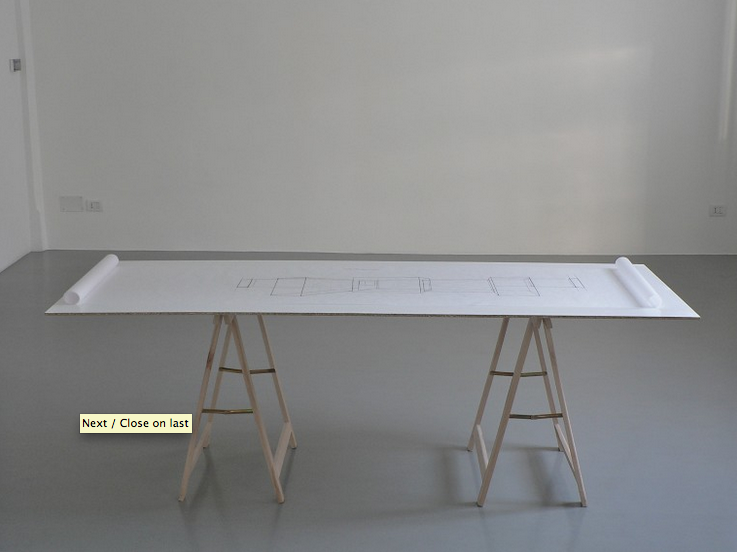
blank, via Reggio 27, Torino
curated by: Progetto Diogene
sabato 26 marzo, ore 17
Many, many years ago, on a fine, clear day, the floating city appeared in the air in full
public gaze, hanging like a hot air balloon.
Above the city several layers of clouds rolled, and at the foot of it heaving sea waves roared. There it was, the floating city; suspended in mid air neither rising up, nor dropping down. When a light breeze came along, it would slightly sway for a brief moment and then become completely motionless. How did this happen? Only the grandparents of our grandparents witnessed this incredible event. It was a marvellous and yet terrifying experience. When they remembered it would distress and overwhelm them just as it did way back when it happened. Above their heads there were layers and layers of colliding clouds, a sky full of lightning and roaring thunders everywhere. In the sea sailed a great number of pirate ships, waving skull and crossbones flags and relentlessly firing cannon shots. Suddenly the floating city came down from the layers of clouds and remained suspended in midair. Many years passed by, and after a while, our great-grandparents passed away along with our grandparents, one after the other they slipped into eternal rest while the stories they had transmitted slowly became obscure legends. Their descendants then decided to live in the floating city, slowly adapting to its conditions. Legends about the city slowly faded away until most of the citizens convinced themselves that the city would have remained that way forever; afloat in mid air neither rising up, nor dropping down and when the wind blew, the city would slowly dangled like a swing. Years and years went by just like this.
(From “Marvels of a Floating City”, by Xi Xi, 1998. Translation by Anna Martinelli)
Saverio Tonoli (Bergamo, Italy 1984) enquires the alienage of presence along with the reconstruction of new ways of research as tèchne of the imaginary. By forcing the visual language, the distortion of the pre-existing, meant as a developing root, becomes the vacuuming goal for the creation of spatial thoughts finally creating a potential line for an out of the ordinary projection. Creation becomes research. The origin of a shared unreal urban landscape is represented through the conversion of something ordinary into a geometrical reality of impossible beauty. (Progetto Diogene)
Venue: blank, via Reggio 27, Torino
Realization curated by: Progetto Diogene per e/static
Opening: Saturday 26th march 2011 at 5 pm
Info: +39011235140 estatic.it progettodiogene.eu
Giovanni Morbin
Lid
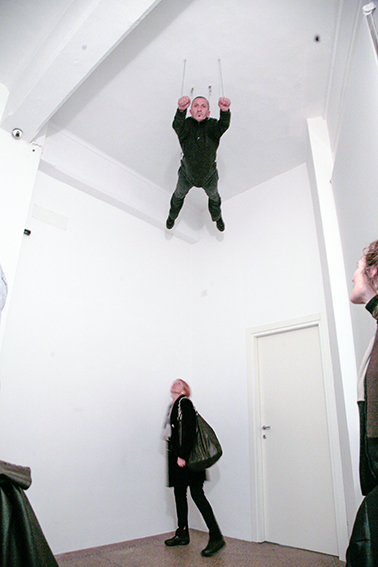
blank, via Reggio 27, Torino
curated by: Progetto Diogene
friday 5 november, 21.30 – 23.30
– I only tell you what you need to know. The rest is for me to worry about.
– twelve stages, huh? And how many more to go?
– there are thirty-three in all.
– If I get through the next twelve as fast as the first ones, I’ll already be in the home stretch.
– you won’t, I promise you. However much you think you’ve suffered so far, it’s nothing compared to what lies ahead.
– the birds don’t suffer. They just spread their wings and take off. If I got the gift like you say, I don’t see why it shouldn’t be a breeze.
– because, my little pumpkin-head, you’re not a bird-you’re a man. In order to lift you off the ground, we have to crack the heavens in two. We have to turn the whole bloody universe inside out.
(Paul Auster, Mr Vertigo, Faber and Faber, 2006)
When Progetto Diogene group was invited to curate the 4th edition of campo volo, we chose to collaborate with the artist Giovanni Morbin (Valdagno, 1956). Over the last few years he has been exploring the nature of form and image through an analysis of everyday objects as an ideal artistic rearrangement of the world.
The dialogue generated together with Progetto Diogene begins with the need to train oneself before spreading to include the sharing of original needs and working methods. (Progetto Diogene)

